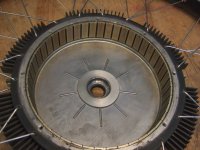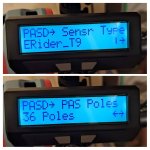justin_le said:Hey Ham, yeah as long as there is pedal cadence detected then the CA3 will continue outputting PAS power. But you can definitely set it up so that below a certain pedal effort the computed PAS output power falls down to zero watts.
In the CA3.15 and earlier firmware, the setting
PAS -> Strt Level was the minimum amount of human watts that must be present on the pedals for the power assist to engage, so if you set this to 60 watts then light pedaling resulting in <60W of human power would mean zero output power.
The formula was basically:
Output Watts = (Human Watts - Strt Level)*(Scale Fctr)
With the CA3.2, we changed this around completely, so now Strt Level is the amount of power present with zero torque on the cranks, and then it increases from here based on your human watts:
Output Watts = Strt Level + (Human Watts)*(Scale Fctr)
In this case, if you wanted the behavior where you need a minimum amount of force on the cranks to get any output power, you need to set Strt Level to a negative value. If your scale factor is 2 W/hW, then a start level of -100 watts means that the motor power will drop off whenever there is less than 50 watts on the cranks.
Output Watts = 50W * 2 W/HW = (-100W) = 0W
So give that a try and let me know if has the behavior you are seeking. If you want the cutoff to be fast, it's good to make sure your WGain setting in the Power Limits setup menu is as high possible without being jittery, and the TrqAverage term corresponds to half the PAS poles of a full crank rotation.
Thank you! I will have a play around soon and feedback what I can make happen




